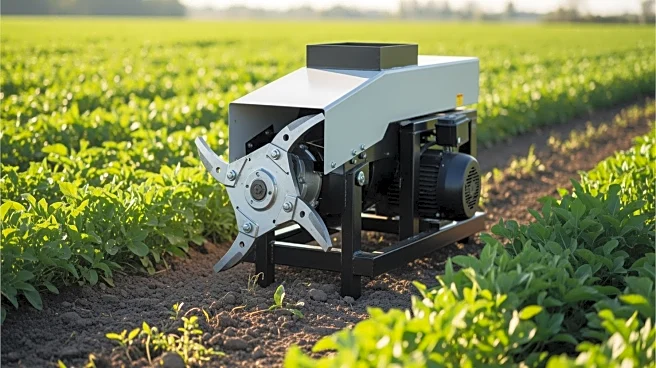What's Happening?
The United States agricultural shredder market is experiencing significant growth, driven by the increasing adoption of sustainable farming practices and the demand for efficient crop residue management.
The market, valued at USD 1.9 billion in 2022, is projected to reach USD 2.7 billion by 2030, growing at a compound annual growth rate (CAGR) of 4.4% from 2023 to 2030. Key players in the market include Mahindra & Mahindra Limited, Landoll Company, LLC, Bobcat Company, Alamo Group, and Daedong Industrial Co., Ltd. Technological advancements, such as the integration of IoT and smart technologies in shredders, are enhancing operational efficiency and attracting farmer adoption, particularly in developed markets. The North American market, valued at USD 600 million in 2024, is driven by advanced farming technologies and sustainability policies like the US Farm Bill.
Why It's Important?
The growth of the agricultural shredder market is crucial for promoting sustainable farming practices in the U.S. As farmers increasingly adopt technologies that improve efficiency and reduce environmental impact, the demand for advanced shredders is expected to rise. This trend supports the broader agricultural sector's shift towards sustainability, aligning with government incentives promoting green technologies and organic farming. The market's expansion also reflects a growing emphasis on reducing carbon footprints, with electric-powered shredders gaining popularity over traditional fuel-powered machines. This shift not only benefits the environment but also positions the U.S. as a leader in sustainable agricultural practices.
What's Next?
The market is expected to continue its growth trajectory, with ongoing technological advancements and increased adoption of precision agriculture. Farmers are likely to seek advanced shredder models equipped with sensors and GPS/AI compatibility to optimize residue management and prepare fields for no-till planting. Additionally, industry consolidation and mergers and acquisitions may further enhance innovation and regional presence. Government incentives and policies supporting sustainable farming practices will likely continue to drive market expansion.
Beyond the Headlines
The adoption of multifunctional shredders that handle crop residue and improve soil health by aiding compost and mulch production highlights a shift towards holistic farming solutions. This trend not only addresses environmental concerns but also enhances soil fertility, reducing dependence on chemical fertilizers. The market's growth underscores the importance of integrating technology with traditional farming practices to achieve long-term sustainability goals.













